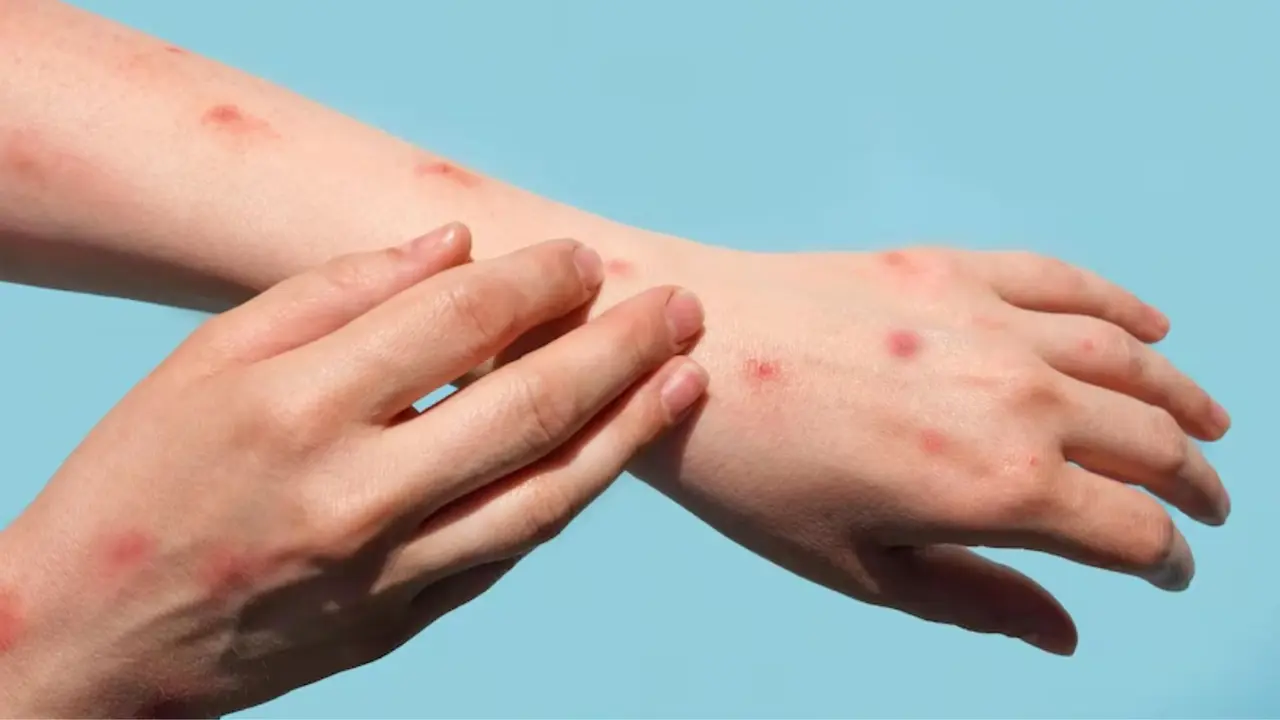Updated 24 September 2024 at 08:25 IST
Mpox Clade 1's First Case Reported in India: Know Symptoms, Precautions
India reported its first Mpox clade strain on Monday, the same strain which led to the World Health Organization (WHO) declaring Mpox a public health emergency
- Science News
- 4 min read

India reported its first Mpox clade strain on Monday, the same strain which led to the World Health Organization (WHO) declaring Mpox a public health emergency last month.
As per reports, The Mpox clade 1 strain has been detected in one person in Kerala who returned from UAE.
“This was the first case of the current strain that led to the World Health Organization declaring Mpox a public health emergency last month for a second time,” the official sources said.
Mpox clade 1b is a type of monkeypox that is currently endemic in Central Africa and can cause severe illness. The strain is fast spreading, which is why WHO sounded a public health emergency after hundreds of infections across African countries.
What is Mpox ?
Mpox is a viral infection caused by the monkeypox virus, which is part of the same family as smallpox. People affected by Mpox often suffer from a rash, accompanied by other symptoms.
The illness typically spreads through direct contact with an affected person or contaminated surfaces or objects. In some cases, the virus can be transmitted from infected wild animals to humans, as Mpox is a zoonotic disease. Reports indicate that the virus causing Mpox has been found in small rodents, monkeys, and other mammals.
Advertisement
However, a US CDC report states that Mpox does not spread through the air like COVID-19. "Traveling on a flight with a person with Mpox does not appear to constitute an exposure risk or warrant routine contact tracing activities," reports suggest.
How Does It Spread?
Mpox usually spreads through direct or close contact with an infected person, including skin-to-skin contact such as touching or sexual activity, and respiratory droplets from face-to-face interactions such as talking, kissing, or breathing nearby.
Advertisement
According to the WHO, during the global Mpox outbreak in 2022, sexual contact became one of the most common modes of transmission of the virus.
Symptoms of the Virus
Typically, affected patients may experience rashes for at least 2-4 weeks, along with other symptoms like fever, muscle aches, back pain, headaches, and swollen lymph nodes. While cases of Mpox do not usually endanger life, some people may face severe symptoms.
The rash may appear similar to blisters or sores and can be seen on the affected person's face, hands, feet, and genital areas. It can also affect mucous membranes, such as the mouth, throat, or eyes.
In serious cases, patients may experience inflammation of the rectum (proctitis) or genitals, which can cause significant pain or difficulty urinating.
According to the WHO, some groups are at higher risk of experiencing severe symptoms, including:
People with severely weakened immune systems
Children younger than 1
People with a history of eczema
Pregnant individuals
More severe cases can lead to widespread lesions, secondary bacterial infections, or complications such as pneumonia, myocarditis, encephalitis, and other life-threatening conditions.
Precautions:
As there is no specific antiviral treatment for mpox, care focuses on symptom management, including pain relief and prevention of complications. Most people with mpox who have intact immune systems and do not have skin disease can recover without medical treatment, relying on supportive care and pain control.
According to the WHO, there are several ways to prevent infection with the virus:
Avoid close, skin-to-skin contact with people who have a rash that looks like mpox.
Maintain hygiene by regularly washing hands and cleaning contaminated surfaces.
Get vaccinated if your doctor recommends it.
If someone is affected by the virus, they are recommended to self-isolate.
Is There a Vaccine Available to Cure Mpox ?
According to the WHO, three vaccines for mpox prevention have been recommended: MVA-BN, LC16, and ACAM2000. These vaccines are available in different countries and are primarily for people at high risk of exposure. However, the WHO does not recommend mass vaccination.
History of the Virus
The virus that causes mpox was first discovered in 1958 during outbreaks of a pox-like illness in colonies of monkeys used for research. Despite its name, "monkeypox," the exact source of the virus remains unknown. Scientists suspect that African rodents and non-human primates, such as monkeys, may harbor and transmit the virus to humans.
In 2022, mpox spread globally. The World Health Organization renamed the disease in 2022 to adhere to modern guidelines for naming illnesses, which aim to avoid offending any cultural, social, national, regional, professional, or ethnic groups and to minimize negative impacts on trade, travel, tourism, or animal welfare. However, the virus itself retains its historical name.
WHO has launched a six-month plan to help stanch outbreaks of mpox transmission, including ramping up staffing in affected countries and boosting surveillance, prevention and response strategies.
Published By : Srujani Mohinta
Published On: 24 September 2024 at 08:20 IST
